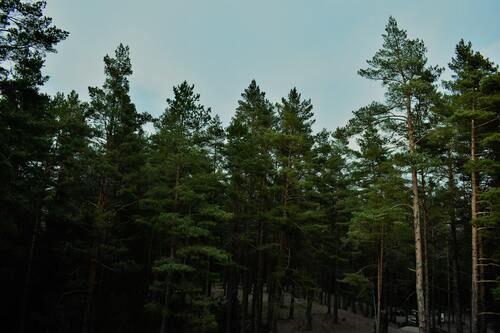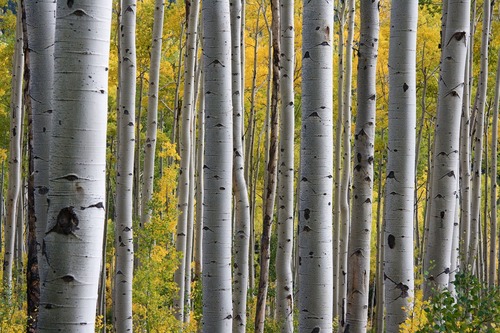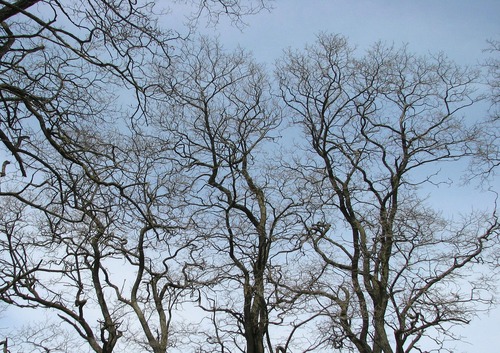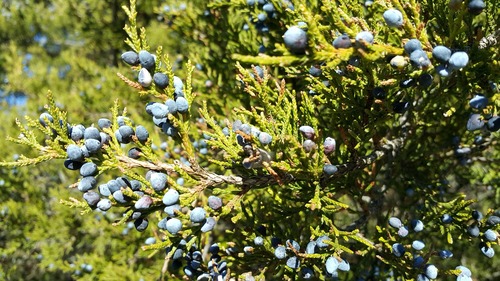Don’t Try to Tame Fast-Growing Pioneers

One of the most common problems that arborists confront is poor tree placement. It’s particularly frustrating because this often means that they become the bearers of bad news.
There’s just not a whole lot that can be done to make life easier on these poor, misplaced trees. You can dig them up and put them somewhere else, but this is easier said than accomplished. Transplanting even medium-sized trees is often cost-prohibitive, and transplantation always increases a tree’s stress.
Life Back Home
Some have a little more habitat flexibility than others do, but individual tree species have evolved to life in specific habitats.
A variety of biotic (living) or abiotic (non-living) things can make a site unsuitable for a given species. Plant a lowland species that likes to keep its feet wet on a dry, upland hillside and it is going to struggle. Similarly, if you install a tree that prefers acidic humus in a bed of alkaline clay, it is going to have trouble thriving.
But if you really want to torture the poor tree, plant it somewhere the light is inappropriate. That is, planting a shade-tolerant plant in full, blistering sun; or, as it more commonly occurs, planting a shade-intolerant tree in a shaded area.
Such trees often die shortly after planting, but those that survive struggle for the rest of their lives.
Life in the Shadows
While plenty of species display some degree of flexibility, most trees have evolved to germinate, grow and live in either bright sunlight or relatively dense shade.
Those that thrive in the dense shade occur in older, closed-canopy forests. They are often called “climax species," because they (and other climax species) form the stable collection of species that will persist until the forest experiences a wildfire or other type of disturbance.
The species that quickly invade disturbed areas and persist around the margins of climax areas are appropriately called “pioneer species." They live life out on the chaotic edge, where the sun is bright, the winds are strong and the browsers plentiful. Life is tough out here, but that’s where they’ve evolved to survive.
Life is a Race
For a variety of reasons, pioneer species have to grow quickly. Ultimately, they must mature and reproduce if the species is to survive. It means that not only must they grow out of the aforementioned browsers’ reach, but also they have to stay out of the ever-advancing shade cast by their neighbor pioneers.
Plants require an abundance of several different resources to grow quickly, including nitrogen and water, but the key thing they need that the impending climax species don’t need is sunlight. Sunlight powers the photosynthetic process, and it is crucial for these fast-growing species.
When deprived of the sun they need, these trees struggle like Olympic athletes training on all-ice cream diets.
Pioneer Life
Some of the most noteworthy pioneers are listed below. Avoid planting any of these species in areas lacking at least 6 hours of full sun. Make a mental note of any of these that may already be growing in your yard in shaded places. Keep an eye on these trees, as they are likely to struggle if they are not already doing so.
- Tuliptrees (Liriodendron tulipifera)
- Red cedars (Juniperus virginiana)
- Loblolly pines (Pinus taeda)
- Virginia pines (Pinus virginiana)
- Sycamores (Platanus spp.)
- Quaking aspens (Populus tremuloides)
- Black locusts (Robinia pseudoacacia)
- Tag alders (Alnus serrulata)
- Sitka spruce (Picea sitchensis)
- Cottonwoods (Populus spp.)
- Bristlecone pine (Pinus longaeva)
- Blackjack oak (Quercus marilandica)
- Big leaf maple (Acer macrophyllum)
- Paper birch (Betula papyrifera)
- Red pine (Pinus resinosa)
- Black cherry (Prunus serotina)
Don’t hesitate to contact us if you are interested in adding a pioneer to your yard, or you would like us take a look at your existing pioneer. We offer the finest professional tree services in San Francisco County, Marin County and the rest of the Bay Area.









